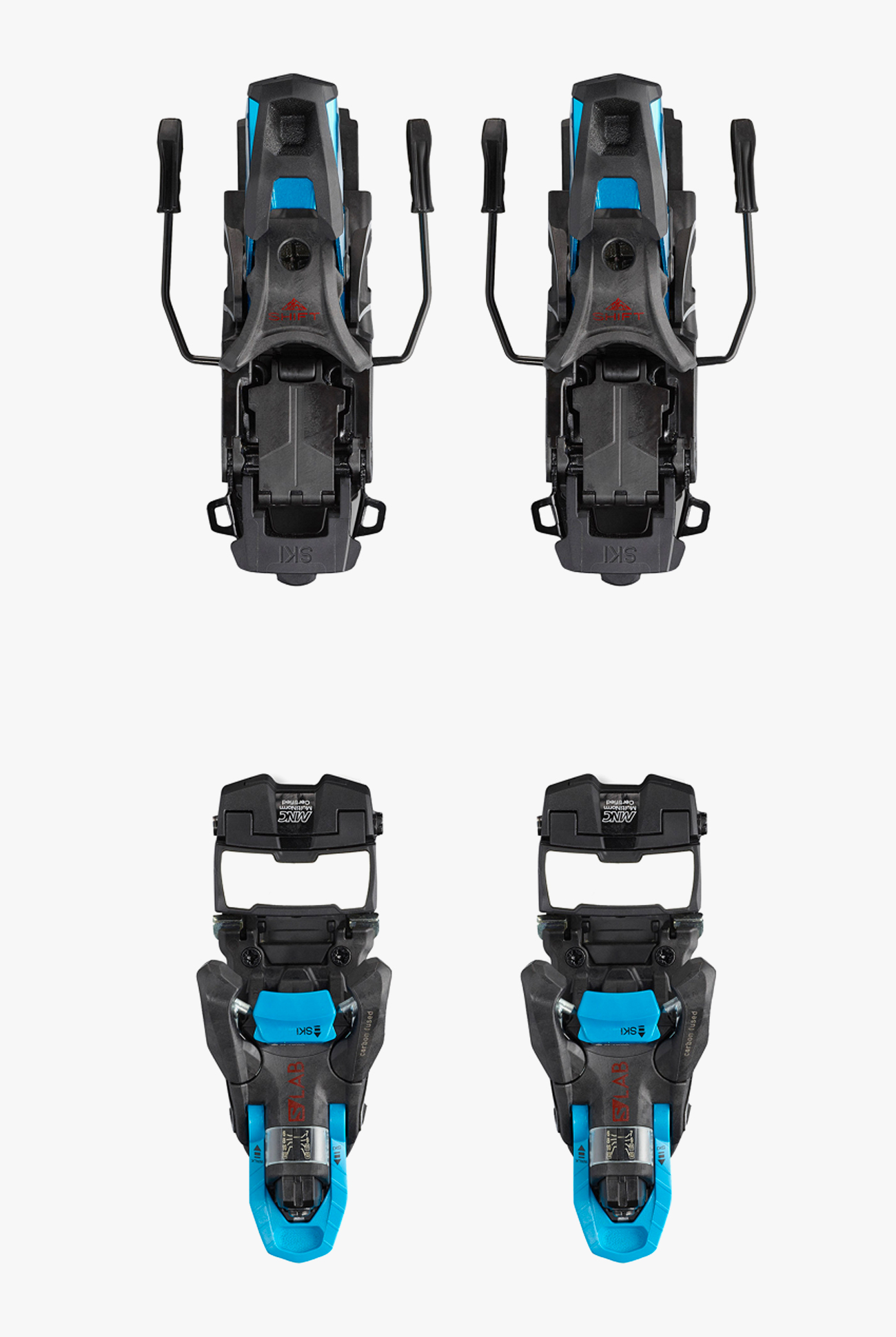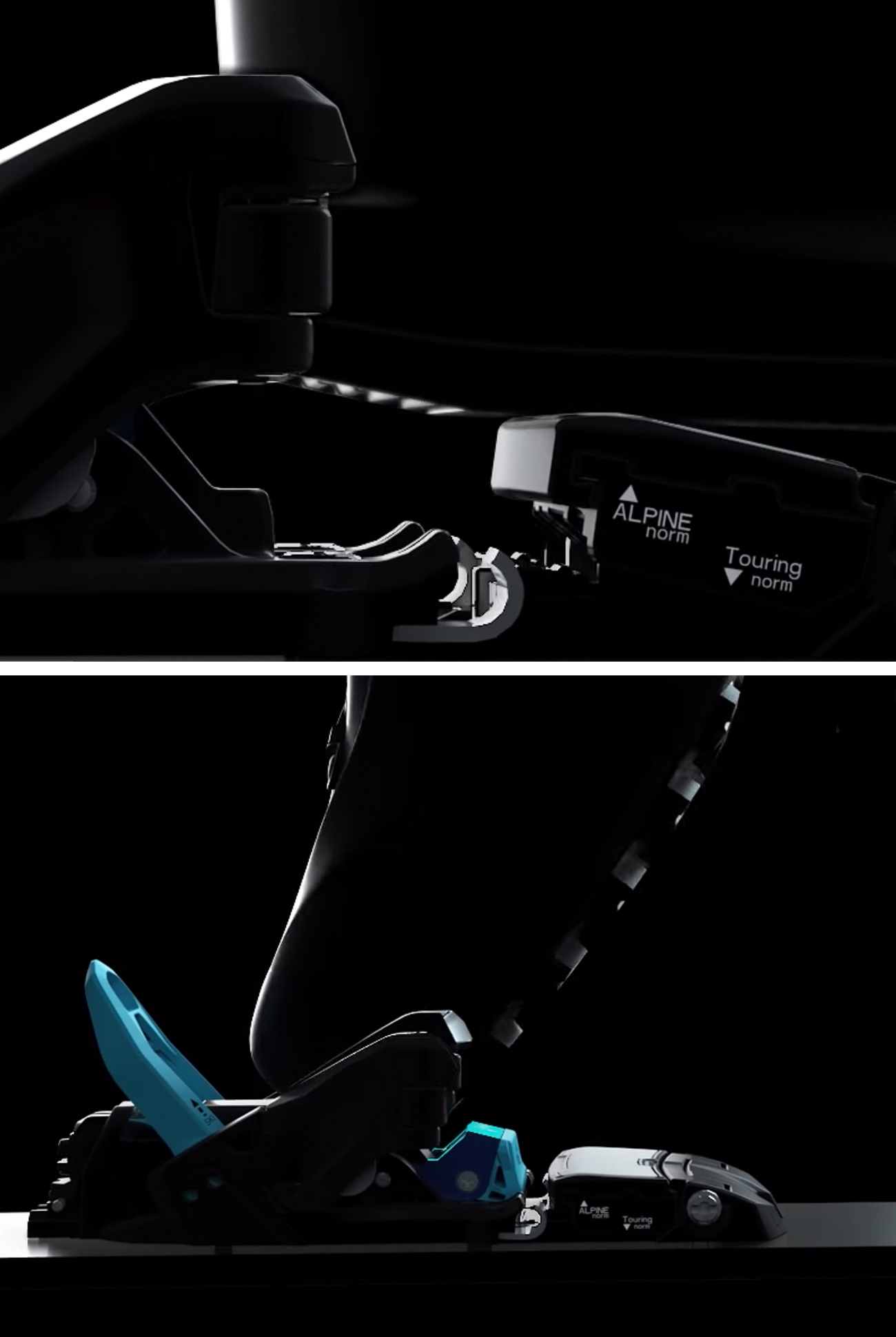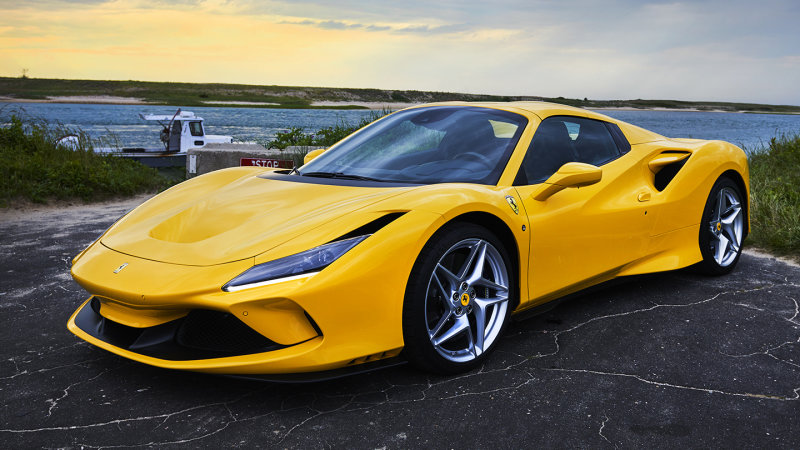Skiers who want to explore terrain beyond resort boundaries have forever faced a quandary: do they want it badly enough to buy a second pair of skis, boots and bindings specifically for touring? The cost alone is a tough pill to swallow, and for a novice who might only go into the backcountry a handful of times per season, it can be downright obstructive.
But touring bindings are designed to be light, so they don’t offer the safety and security of those intended for downhill. The compromise has been frame bindings like Marker’s Duke or Salomon’s Guardian that essentially position a full downhill rig onto a platform with a release that frees the system to pivot off the toe for uphill travel. The rather hefty downside is that with every step a skier must lift the entire weight of boot and binding, and that can take a toll over 3,000 feet of vertical.
Salomon’s answer is the S/Lab Shift MNC binding. It’s designed with a dual-purpose toe piece that transforms from a fully-certified alpine mode to a pin-equipped uphill form with the action of a lever, and it means that skiers can have their powder and eat it too, inbounds and beyond.
The Good: It’d be easy to get tangled in the binding’s highly-technical details, but the key innovation is the toe piece. It uses pins for uphill travel and transforms with a lever into an alpine binding for downhill skiing. The toe piece isn’t only more versatile; it’s also fully-certified with a DIN range that goes up to 13, so it’s remarkably safer than backcountry bindings too. Additionally, the Shift is Multi-Norm Compatible, which means it can accommodate all certified types of ski boot soles (many alpine bindings won’t accept a touring sole).
Who It’s For: The Shift’s transforming toe makes it equally suitable for those who spend half their time out-of-bounds as it is for skiers who may only go touring once or twice per year. The binding’s downhill performance is so good that it’d be a fine option for skiers who might never use its touring function (although better options exist). Perhaps, more than anyone else, it’ll be travelers who benefit most from the binding’s capabilities — instead of hauling two setups for the resort and the backcountry, they can now build one kit that’ll work everywhere.

Watch Out For: Transitioning the binding between modes is intimidating at first — the binding requires a few more steps than familiar backcountry models– but anyone who’s previously used a touring binding will get the hang of it after one or two tries. Weight-conscious skiers will compare it to products from Dynafit and others and decry its 865-gram heft, but remember that those don’t offer the same level of safety or downhill performance as the Shift. Comparatively, the Guardian MNC 16, Salomon’s previous frontside/backside frame binding, weighs in at 1,495 grams. If you want anything lighter than the Shift you’re back to looking at traditional pin-toe touring bindings.
Alternatives: There are no true alternatives to the Shift, but there are a few other bindings that come close. Marker’s Kingpin ($649) is lighter and has a full alpine heel but not an alpine toe. Fritschi’s Tecton ($650) has an alpine-style heel as well, but it’s even lighter. The tradeoff in weight savings is that neither of these alternatives offers the same boot compatibility or downhill security as the Shift.
Review: The allure of backcountry skiing is clear: no crowds, untouched snow, unexplored terrain. But for those who have only experienced skiing with an aided ascent — be it from a chairlift, helicopter or snowcat — trudging uphill with the aid of special touring bindings and climbing skins can seem like a self-inflicting sort of activity. Why spend hours huffing out a sweat in the cold for one or two short-lived runs when a lift can bear six times the amount of fruit for no labor at all? One might also ask, “Why travel at all when you can Google pictures of any place on Earth?”
Ski touring is enjoyable in the same way as hiking. It’s social (but doesn’t have to be), meditative and, in addition to views, provides the reward of a well-earned descent. Besides, outdoor companies produce a full range of apparel and equipment designed specifically for the task — it doesn’t have to be uncomfortable. But it does call for some extra purchases to be made.
The pivoting motion needed to walk up a mountain calls for a specific set of bindings. As mentioned earlier two main options here (although a handful of unique alternatives do exist): ski bindings that fasten at the toe with two lateral pins that hold touring-specific ski boots pincer-style, and frame bindings, which essentially put a downhill setup onto a platform that can be unlocked to free the heel. The former is ideal for climbing but not the best option for skiing inbounds at a resort while the latter handles both well but neither perfectly.

Years ago, when I was just beginning to get into backcountry skiing, my attempt to reconcile these differences left me paralyzed; neither seemed optimal and despite working three jobs, I couldn’t afford two full setups. What I wanted was the best of both worlds without sacrificing performance in either venue. I was half a decade ahead of the available equipment but unbeknownst to me, Salomon was already two years into the development of the Shift.
The binding was only released this year, but last December Salomon invited me and a faction of ski journalists out to Alta, Utah for an early look at it. The evening of our arrival, we gathered in one of the historic Rustler Lodge’s conference rooms to learn about all that went into the creation of the Shift. A lot went into that — it has 300 parts, uses a new carbon-infused plastic, went through many iterations over seven years of development — but I’m going to focus on how it works.
It works great. The following morning we set out for Alta’s Collins lift — stepping into the Shift when it’s in alpine mode is just like entering any downhill binding — rode it to the top zoomed across fresh corduroy and ducked a rope (with the blessing of our guides). A few short pitches later and it was time to transition into uphill mode. This process, which to me appeared quite complicated during the conference room demo the night before, is actually quite easy. Flip down the middle part of the toe piece and two touring pins shoot up; pull back the lever that rests in front of the heel piece; press down on the toe piece lever in order to spread the pins to slide the boot in; pull that same lever up to lock the toe piece; stomp down with the heel to lock the brakes up and out of the way. Okay, re-reading that, it does sound complicated, but it isn’t. Actually, in many ways, I found the shift easier to operate than other touring bindings, despite an extra step or two.
We trekked our way through a mix of trees and closed groomed trails with a combination of switchbacks and head-on assaults up steep terrain. On the uphill, the Shift performs as any other touring binding does. In its “default” state, it provides two degrees of climbing aid, and it also has a 10-degree riser for use on steeper slopes. That’s it though, and while other bindings might offer seven- and 13-degree climbing aids, Cody Townsend and Chris Rubens, two professional skiers who played critical roles in the development of the Shift, justified this decision aptly: “If you’re on your third riser you’re climbing too steep.” (Also, it’s notably easier to flick up the 10-degree riser on the Shift with a ski pole than any other touring binding I’ve used.)
Transitioning back to downhill mode is a simple reverse operation of the process described earlier. And skiing the binding, well that’s like skiing any other alpine binding. I usually make a slightly more calculated descent when using touring bindings and remain semi-conscious of them throughout the ride, but after I got used to the idea that these were alpine bindings, I was able to ski freely. We skied fast groomed runs for the rest of the day and executed as many G-forces-inducing turns and hit as many side trail kickers as were available.
Years ago, the cost associated with buying two separate sets of gear for inbounds and out-of-bounds skiing was enough that I resigned myself to life skiing and easy-access backcountry zones. When I needed a touring setup, I either borrowed or rented one. After the trip to Alta last year Salomon let me keep the bindings for continued testing. I’ve put a full season on them at this point and haven’t run into any issues on the uphill, downhill or transitions that might make them a deal breaker for any particular type of skiing. In fact, because it’s so versatile, the binding has become my go-to for any trip; regardless of the terrain, conditions or whether I’ll spend more time going up, or down.
Verdict: In the S/Lab Shift, Salomon has created the most versatile ski binding available. It isn’t the lightest touring binding or the burliest alpine binding, but with the capacity to go uphill with pins and downhill without, and the capability to work with nearly every type of ski boot, neither of those superlatives matter — the Shift is more adaptable than anything else and doesn’t sacrifice any functionality, or safety, to get there.
What Others Are Saying:
• “To be able to go uphill in a binding that I like as much as a Kingpin, then go downhill on a binding that has the same DIN certification and same/similar power transfer as a good alpine binding… this binding is ticking all of the boxes — for me.” — Jonathan Ellsworth, Blister Review
• “My criticisms were minimal. My gratitude for what this binding is to my skiing moving forward was plenty, as the Shift sets a new standard for alpine bindings and touring compatibility.” — Julie Brown, Powder
• “The toepiece provided power transmission similar if not equal to that of a true alpine binding, allowing me to ski fast, confidently and without concession. From steep, fall line turns to quick-reaction maneuvers in the trees of Lower Rustler, the binding performed as advertised. Both Townsend and Benoit Sublet, the Alpine Binding Product Manager on the SHIFT project, were tossing backflips left and right using these bindings. If the engineer behind the product has enough confidence to stomp inverted tricks on them, the proof is decidedly in the pudding.” — Donny O’Neill, Freeskier
Key Specs
Weight: 865 grams (with brakes and screws)
DIN Range: 6-13
Climbing Risers: 2 and 10 degrees
Boot Sole Compatability:
Available Brake Widths: 100, 110, 120mm
Salomon provided this product for review.

Hot takes and in-depth reviews on noteworthy, relevant and interesting products. Read the Story




